5. Five Easy Pieces (1970)
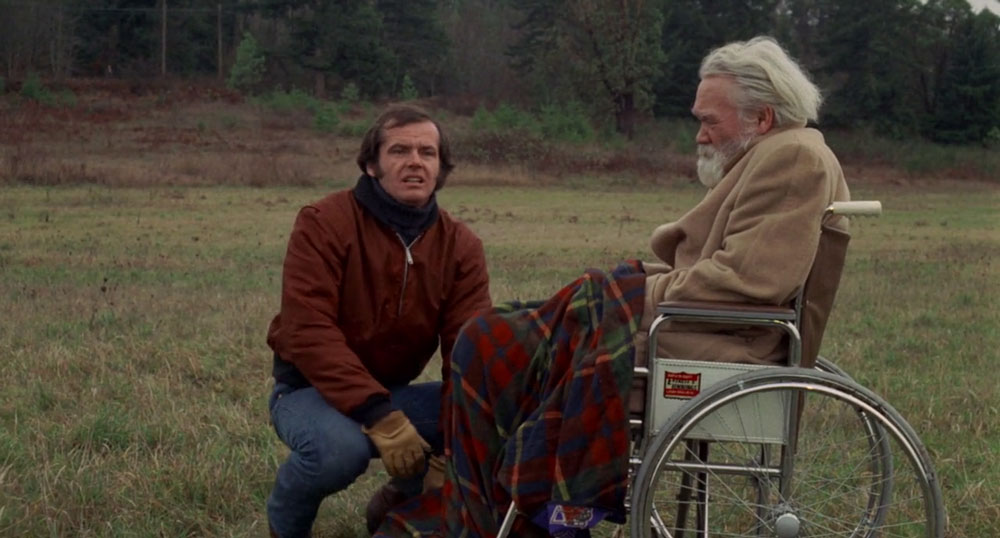
Though Hells Angels On Wheels saw Nicholson in a lead role, this next pick arguably sees Nicholson’s first serious lead performance, in this BBS produced character study directed by studio head himself, Bob Rafelson. Coming straight off the success of Easy Rider, Five Easy Pieces was the company’s first foray into serious family drama, and it paid off immensely thanks to revelatory central role by Nicholson.
Bobby Dupea, a disgruntled oil rig worker who finds no joy in his work nor relationship with girlfriend Rayette (Karen Black), is suddenly ushered back to his family after his father is taken gravely ill. In returning home, he struggles to find a balance between his new life and past life as an educated concert pianist, in a turn that leads to heartbreaking revelations.
What makes this film so integral to America’s counterculture film movement is that it perfectly displays the aftermath of left in the wake of such industry changing films such as Easy Rider. Shifting gears to a more subtle, family based film, it asks the question; what now? How does society see the outcasts now after they’ve been capitalised upon? Nicholson’s Dupea is the key touchstone in answering this, a character that actually made himself an outcast from his conservative family, and has a hard time reinstating himself within when called upon. Playing the role with a distain for those who show him love and subsequent moments of explosive anger, Nicholson’s Dupea represents all of counterculture America, frustrated at their confused place among America’s children. Though he held this metaphorical mantel before, it’s made all the more interesting by fitting into the context of this solemn family drama, surrounded by the other counterculture movie icons such as Karen Black and Toni Basil, shown here in a totally different light.
In that, Five Easy Pieces can be considered as big as a counterculture staple as Easy Rider, in the sense that it laid down the ground work for where the movement would go next. Before the advent of B-Movie capitalism in the form of Star Wars later in the decade, mainstream 70’s cinema would be defined by original, performance driven films such as this, and Nicholson would continue to be in most of them. However, his role in Five Easy Pieces is truly iconic because he presented a blank canvas for America’s lost children to project themselves upon, in a film that existentially presents the future of the film movement, and saw it being taken more seriously among all critics in Hollywood.
4. The King Of Marvin Gardens (1972)
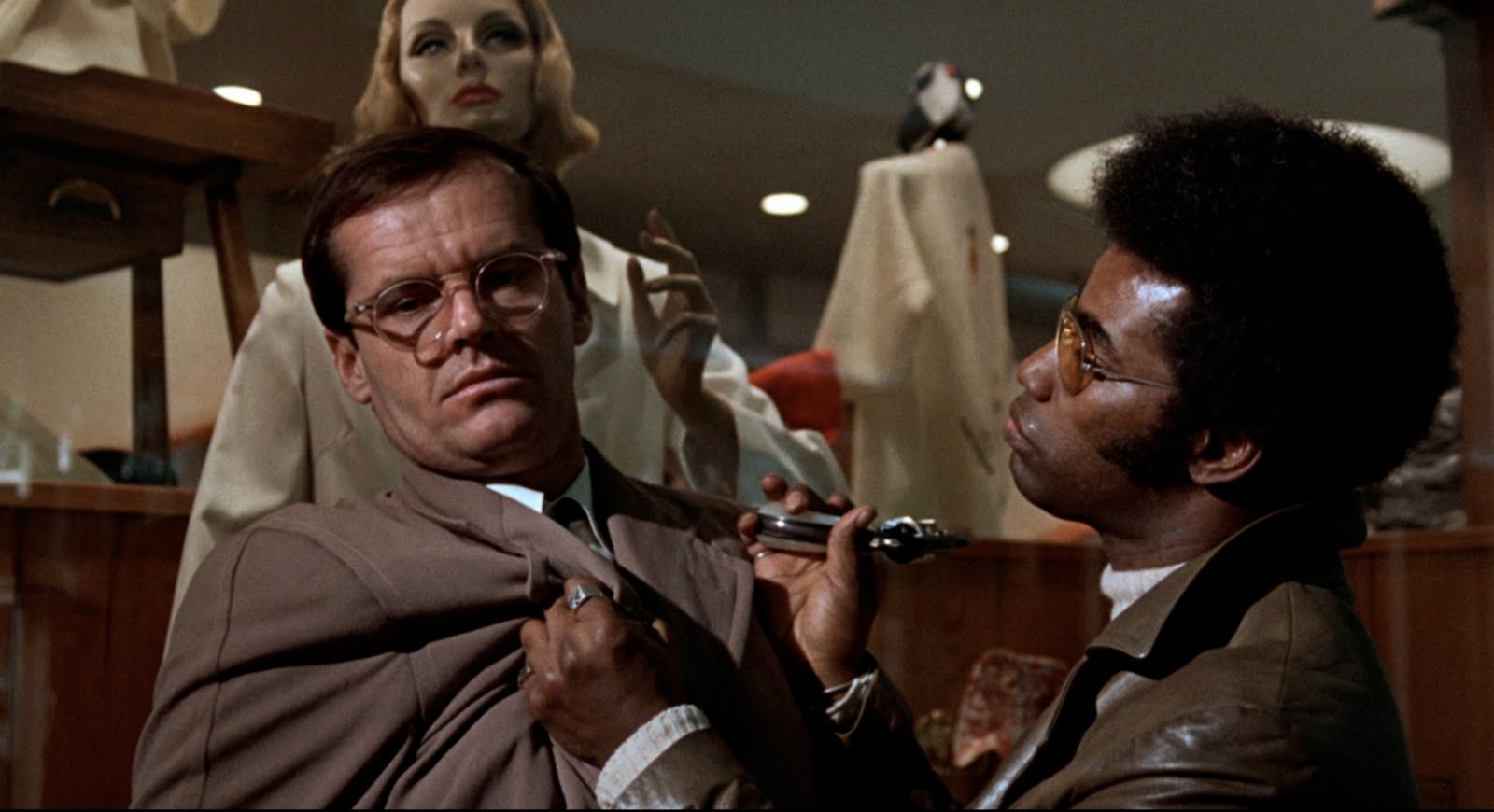
This next pick was directed by one of Nicholson’s closest collaborators within BBS Productions, Bob Rafelson, who would go on to direct the actor in a total of 6 films, and here their chemistry is incredibly apparent. It marks almost the exact point in which the American counterculture cinema movement had the confidence to bring it’s avant garde sensibilities into the context of the classic Hollywood drama, having already established their prowess with previous youth orientated vehicles, and, most importantly, an absolute powerhouse display of acting by Jack Nicholson.
Estranged brothers David (Nicholson) and Jason Staebler (Bruce Dern) are brought back together when the latter is released from prison in Atlantic City, New Jersey. With the promise of making “our fortune”, Jason brings his brother into his world, in an effort to carry out a scheme of building a casino in Hawaii. However, the depressed David quickly realises his brother is in much more trouble than it originally seemed.
Though defined by it’s heart wrenching performances and well written plot, what set this film apart from most family dramas of the time was it’s keen sense of surrealism. Scenes such as David and Jason talking family matters on a beach while both on horseback, and the imaginary beauty pageant for Jessica (Julia Anne Robinson), a prostitute that lives with Jason, jerk the audience into realising that this is truly a counterculture classic. Infusing silently experimental moments such as these, along with the casting of BBS regulars, set the film aside from the classic Hollywood family drama, and make a statement for the Counterculture cinema movement to be taken seriously.
Dern, Robinson and Ellen Burstyn, who plays Jessica’s similarly troubled mother Sally (just before her international breakout in Freadkin’s The Exorcist), all deliver astounding performances in this truly affecting film, so the fact that Nicholson managed to hold his own among these heavy weights not only signals his talent in roles to come, but that he was truly an icon of the time, maintaining consistently great performances over varying roles in these films, youth orientated or not.
The opening and closing speeches he delivers as David are absolutely heartbreaking, and when mixed with Rafelson’s experimental sensibility during the film, become eerily haunting.
3. The Last Detail (1973)
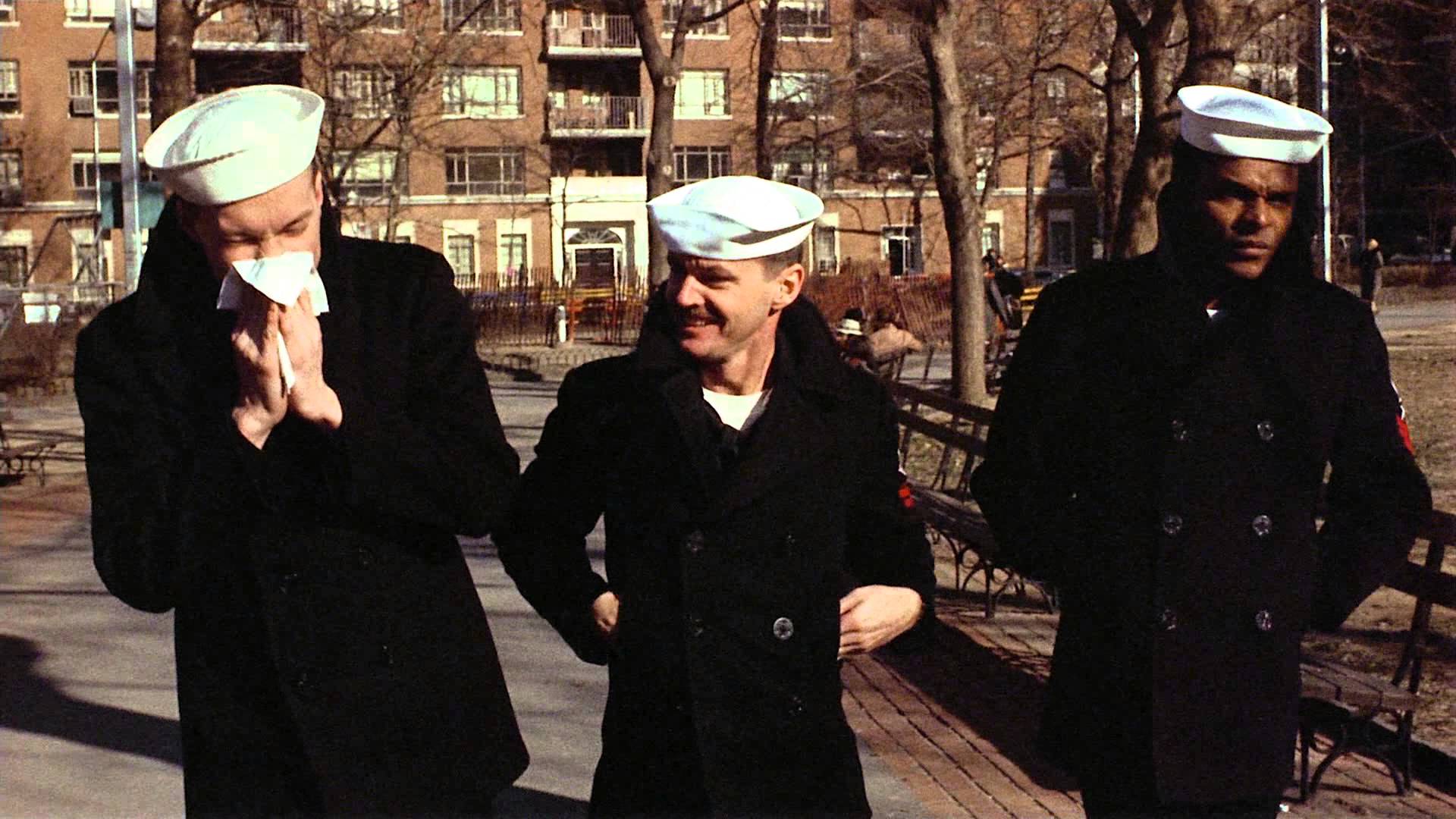
Stepping away from BBS Productions now is this next film helmed by another influential voice of the era, Hal Ashby. The former editor cemented his unique style with 1970’s The Landlord, and later received universal notoriety with Harold & Maude a year later. To follow up that oddity, he chose to utilise Jack Nicholson in the lead role for a film that could be seen as the actor’s first performance within the context he is known for today, within the realm of classics such as One Flew Over the Cuckoo’s Nest, and one of the last counterculture films he would star in.
With a screenplay written by New Hollywood legend and Drive, He Said star Robert Towne, The Last Detail follows navy men Billy “Badass” Buddusky (Nicholson) and Richard “Mule” Mulhall (Otis Young) as they transport Laurence Meadows (Randy Quaid) to a military prison for petty theft. Though the two older service men start out as Meadows’ superiors, the excursion soon becomes a last gasp of freedom in which Badass and Mule show the youngster the rites of passage.
Though this signalled the beginning of the end for the on-the-fringes filmmaking the likes of the BBS films were, Ashby’s counterculture sensibility is still duly felt here, and with Nicholson leading the pack, makes for a hell of a film. The character of Buddusky has all the below surface, bubbling anger that characters like Poet and Bobby Dupea have, yet represents the fragility of the American image; carrying authority with occupation, yet incredibly fractured and frustrated on the inside. Nicholson is really the only actor who could ever embody a role as metaphorical as that, with his ability to full sink into any character he inhabits.
Along with Drive, He Said, this film is also noteworthy for it’s trouble with the MPAA, having to delay it’s released due to battles over profanity, and actually held the honour of most uses of the F word in a film at the time, and rightly so. The film’s level of vitriol is essential to understanding the deep set insecurities of Buddusky and his crew mates in a story that lays America’s problems bare. These daring decisions made for films that Nicholson was heavily involved in again prove how much of an icon of the time he is, as without these choices and battles, further chances and risks in cinema would never have been made.
2. The Passenger (1975)
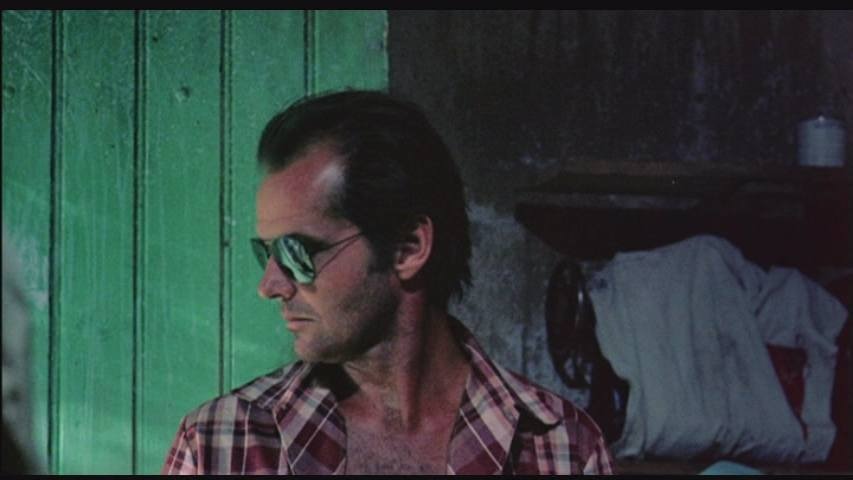
Though now a few years removed from the counterculture movement, this film is essential in understanding why Nicholson was such a key figure of the era, because it takes it right back to the start.
One of the most commonly referenced inspirational films among the filmmakers of the counterculture era is Blow Up, Michelangelo Antonioni’s mid sixties masterpiece that changed the way western audiences realised films could be made. So, nearly a decade on, the casting of a legend born out of that era in another Antonioni film couldn’t be more fitting.
The film follows David Locke, a journalist who is in Chad working on a documentary. When he decides to swap identities with a mysterious dead businessman (Charles Mulvehill), he becomes David Robertson, who turns out to be an arms dealer tied to the civil war in the country. As he falls further and further into his lie, Locke’s life becomes increasingly endangered, along with that of an architecture student (Maria Schneider).
While a plot synopsis like that sounds like it could be from a huge Robert Redford conspiracy theory blockbuster of the time, Antonioni’s masterful subversion of expectation once again makes for incredibly unique viewing. In spite of quippy dialogue and huge action set pieces, he tells the story through awe inspiring direction (the 7 minute one shot finale being a particularly haunting example), cinéma vérité flourishes (a metatextual layer on top of Locke’s occupation) and of course, a thrilling central performance.
Seeing Nicholson take the lead in film as uncommercial as this, especially while he was in the midst of heading up huge productions such as One Flew Over The Cuckoo’s Nest, shows how long his legacy within genre bending cinema endures, particularly with a director that essentially helped birth the counterculture cinema movement itself just years before. With this film, both Antonioni and Nicholson were cemented as icons of the era, turning a plot that could’ve easily fallen into the wrong hands into an incredibly subversive and thought provoking film, notions that the counterculture era of filmmakers were defined by.
1. Easy Rider (1969)
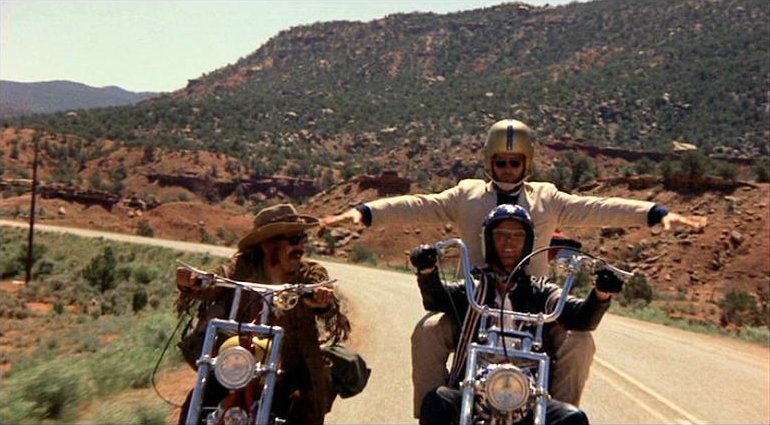
And finally, the one that started it all. Though countless counterculture pieces of art had been crafted before this, Dennis Hopper and Peter Fonda’s seminal road movie is the exact point in film history that everything changed. Big studios realised just how out of touch they were with their audiences, as this lighting in a bottle oddity took the country by storm at the end of a tumultuous decade, restructuring the Hollywood landscape forever and even reaching critical prestige at the Cannes film festival. And, to play against type, Jack Nicholson was brought along for the ride in an unforgettable role.
Directed by fellow BBS regular Dennis Hopper, the film follows bikers Wyatt (Fonda) and Billy (Hopper himself) on an epic journey across the southwest of America after a successful drug deal. Along the way, they meet fellow hippy Jesus (Antonio Mendoza) as well as his commune, alcoholic lawyer George Hanson (Nicholson), lethal conservatives in the deep south, and all manner of revelations by the time they hit New Orleans with the help of prostitutes Karen (Karen Black) and Mary (Toni Basil), along with a helpful dose of LSD.
To say the film “Captured the nation’s imagination” is an understatement. It was an honest, real snapshot of the fractured country, displaying all aspects from worst to best, and the lives of a culture that the conservative population didn’t understand. Finally, a film had been made for the young audiences that were tired of seeing John Wayne kill a hundred Indians at a time or Lee Marvin paint his wagon. This was something that spoke to them and the counterculture movement in a way that finally understood.
Interestingly, Nicholson’s supporting role here sees him as one of America’s accepted children as opposed to the hippie leads. A short haired lawyer, Wyatt and Billy meet George Hanson in a New Mexico prison cell. Yet, he is never hostile to them. After all, to the outside world, all three are considered to be on the same social class, with the officers treating all equally bad (Hanson’s more polite exchanges only elude to the fact he frequently ends up there). So, when Wyatt and Billy bring Hanson along, he becomes the key mediator between two cultures; counter, America’s outcast children, and conservative, America’s accepted children. In terms of connecting with audiences, Nicholson is absolutely essential, an a true icon in the landmark film. Hopper and Fonda casting their friend, an actor who had portrayed many hippies and youth orientated roles, as the square lawyer was an ingenuous bid for acceptance among greater America, and one that paid off. Nicholson was an essential element of the film that spawned a generation. A true icon of the counterculture era.
Though rumours and whispers of upcoming projects starring Nicholson have emanated show business for some time now, it’s largely understood that the actor, now at 84 years of age, has unofficially retired. And who can blame him?
As the most Academy Award nominated male actor in the history of the film industry, the legendary screen presence has accomplished and set new standards for filmmaking time and time again, from his early days in late 50’s Roger Corman produced drive-in flicks to the lighthearted dramas that celebrated his maturity that he would end his career on. And although his more popular successes are great examples of his achievements, his influence on the changing cinematic landscape of the late 1960’s and early 1970’s is too significant to be outshone.